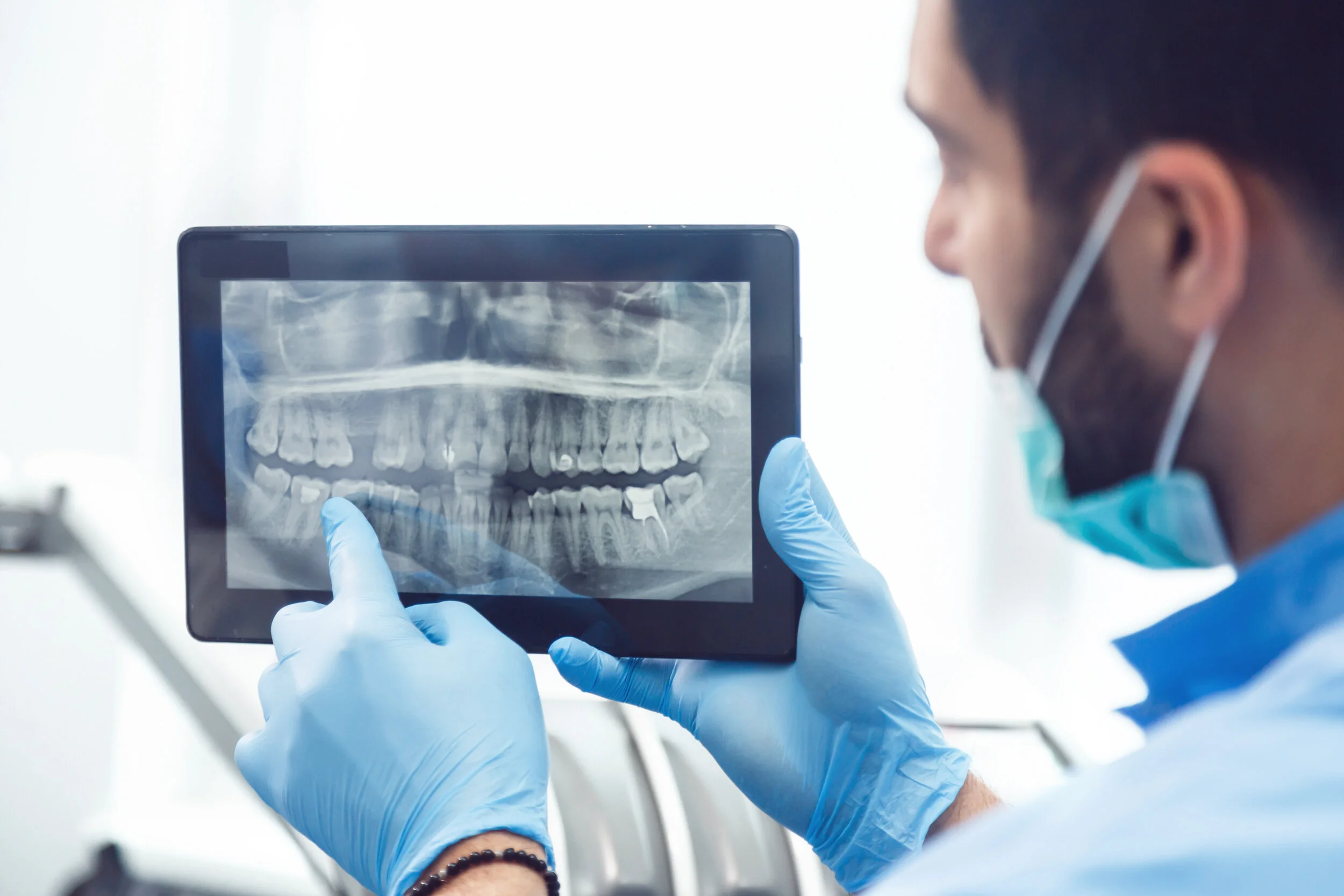Preventative Care
Exams
Why get an exam?
At Kuna Smiles, we believe that patients can stay on the path to excellent oral health and wellness through regular prevention techniques and appropriate patient education. The first part of putting you on this oral wellness path is through a comprehensive dental exam. These exams are given so we can plan your future care and make recommendations for what you need right now. The more information your dentist has about you and your needs, the better they can treat you and help you.
How often should I get an exam?
The American Dental Association recommends a comprehensive dental exam for all patients every three years starting at age two. (The frequency of these comprehensive exams may increase if we find that you are at higher risk for certain conditions or diseases based on our initial comprehensive dental exam findings.) The most important reason for these in-depth exams are the diseases and conditions that can be prevented or diagnosed during these exams.
Importance of regular exams
Your oral health affects your total-body health and vice versa. Poor oral health has been linked to diabetes, systemic disorders, high blood pressure, oral cancer, gum and bone disease, deteriorating cardiovascular health and sinus problems. Through a proper evaluation of your teeth, gums, jaw, and surrounding tissues your dentist can reduce your likelihood for conditions that can endanger your overall health.
It is important to note that everything we do during the comprehensive exam appointment is something you’ve been educated about and have agreed to do. We want you to be part of the process, and understand what is needed and why.
Cleanings
Dental cleanings are important for many reasons, most importantly of which is to keep your gums and bone healthy. Your gum tissue (aka Gingiva) and the underlying bone, are essential for your oral health. They supply blood, nutrients and protection for your teeth. Without them, teeth are more susceptible to decay, infection and tooth loss.
Why do you need your teeth cleaned?
Visiting your dentist is about more than preventing cavities. It is imperative to keep healthy gums and bone, too! As you’re reading this, bacteria are congregating on your teeth and gums. If not brushed off twice daily, these bacteria will build up to form plaque and calculus. Plaque causes inflammation, sensitivity and bleeding of the gums called gingivitis. If left untreated, gingivitis can turn into gum disease (aka Periodontitis) which causes bone loss around teeth.
It is important to prevent bone loss because without it, your teeth will have no way to stay in your mouth. Once there has been too much loss of bone, teeth may get loose and need to be extracted.
How often should you get a cleaning?
As we all know, everybody is different, and there is no exception to this in health care. Each person has a unique immune system and response to bacteria in the mouth. Depending on your body’s reaction to bacteria, and your at-home daily hygiene practices, you may need to visit your dentist as often as 4 times per year.
Most people need preventative plaque removal every 6 months, but about 1 out of 3 people require a deeper cleaning on a more regular basis. For those that require a deeper cleaning, they may need to visit the office every 3-4 months to prevent gum disease. You and your hygienist will develop a schedule that will keep you looking and feeling your best.
Sealants
One of the most common places to get a cavity is in a groove or pit on your tooth. This occurs because bacteria can hide in them and slowly cause a cavity. In adults, grooves are typically stained and it can be years before a cavity develops. In children, however, these cavities can grow quickly due to diet and lack of high-quality toothbrushing. For this reason, we often recommend sealants on newly erupted permanent teeth in children.
What is a sealant?
A sealant is a protective material that blocks bacteria from getting into the grooves and pits of your tooth. They’re made of a specially formulated resin that penetrates deep into the groove of your tooth so that it prevents bacteria from hiding in these spots.
Why should you get sealants?
Oftentimes, the grooves and pits on your back teeth are too deep and too narrow for toothbrush bristles to clean. This means decay-causing bacteria can thrive down there and cause cavities. We typically recommend that permanent back teeth get sealants to drastically reduce the chance of cavities.
Sealants on permanent molars reduce the risk of cavities by 80%, according to the Journal of the American Dental Association.
What to expect?
We can do sealants on multiple teeth at one time, and the best part is that you don’t need to be numbed for any of it! You can expect to have the doctor, hygienist, or assistant thoroughly clean the grooves of your teeth. Afterward, they will make sure the tooth is dry. We will place some “blue shampoo” on the tooth to prepare it for the sealant, which gets rinsed off and dried. Then the sealant will be painted into the grooves and pits of the tooth.
Sealants can become worn, chipped, or even fall out over years of use and abuse. If this happens we recommend getting it replaced. Please speak to one of our wonderful team members regarding the Kuna Smiles sealant guarantee.
Fluoride
What is fluoride?
Fluoride is a mineral found in natural water sources - even in lakes and rivers. It is useful to prevent cavities in humans by topical application on the teeth. It works anytime you brush with fluoridated toothpaste, rinse with fluoridated mouthwash, or drink fluoridated tap water.
A common misconception is that fluoride is harmful to humans. While anything can be harmful in high quantities, fluoride has been extensively studied and researched to understand its use. For example, the fluoride in your tap water is at such a low level that even dogs, who are deathly sensitive to fluoride, can drink tap water without any problems. Despite this low level, fluoridated tap water is still very effective when it washes over your teeth on a regular basis.
How does it work?
Your enamel is made of hydroxyapatite, which contains calcium ions. When acid lower than pH 5.5 washes over your tooth, it strips away all of the calcium, causing your tooth to dissolve. Bacteria use acid to form cavities, which is more likely to happen when acidic foods and drinks have already weakened your enamel.
When fluoride comes into contact with your tooth, it replaces the calcium found within the enamel. This changes hydroxyapatite to fluorapatite, which doesn’t dissolve as easily when exposed to acid. Unfortunately, our mouths become acidic every time we eat or drink something which can strip away some of the fluoride ions, so it’s important to “recharge” the tooth with fluoride-containing toothpaste twice per day.
Why use fluoride?
The more often we can apply fluoride to the enamel, the stronger it’ll be! Additionally, the higher concentration of fluoride we can put on the tooth the better it’ll work. For these reasons, we advise everyone to brush with fluoride toothpaste each day and get a fluoride “boost” at each dental check up by having your hygienist paint fluoride varnish on your teeth.
Sometimes, when a person has had several cavities at one time, we also recommend a higher strength toothpaste. By using a toothpaste with more fluoride, we can slow or prevent the progress of cavities.
Digital X-Rays
What is an x-ray?
Dental x-rays are a type of low-dose radiation imaging that creates pictures of the inside of your mouth and face. The images show the parts of teeth and bones in different shades of black and white. This is because different tissues absorb different amounts of radiation. Calcium in teeth and bones absorb x-rays the most, so bones look white. Muscles and other soft tissues absorb less and look gray. Air absorbs the least, so it looks black.
Why get x-rays?
X-rays in dentistry are very helpful to find infections, cavities, missing teeth, nerves, and other diseases such as cysts or tumors. Without x-rays, the dentist cannot give complete or accurate treatment recommendations for cavities, infections, or other diseases that might be hiding inside the bone.
When taken at appropriate time intervals, x-ray imaging can also be a very helpful preventative tool. With them we can advise where to floss or brush more, when fillings or crowns need to be replaced, when bone is receding, if root canals are still healthy, and more.
How much radiation is in a dental x-ray?
With the help of digital imaging, we can use extremely low doses of radiation to get a useful x-ray. In fact, a dental x-ray uses the same amount of radiation that a person is naturally exposed to in 1 day on Earth (0.005 mSv). Yes, you read that correctly! You’re exposed to radiation every day, but the amount you receive depends on what you eat, drink, and your location.
For comparison, eating a banana exposes a person to about 0.0001 mSv of radiation, and a flight from NYC to LA exposes a person to about 0.02 mSv. Occupational Safety and Health Administration recommends an annual maximum of 50 mSv for healthcare workers. At that level, it would take 10,000 dental x-rays to reach an annual radiation limit!
What to expect?
At Kuna Smiles, we believe that regular check ups will reduce your dental treatment needs over your lifetime. Part of doing so requires us to get updated x-rays at appropriate times. We follow the American Dental Association’s guidelines that most patients need updated x-rays once per year. Depending on your dental needs, we may recommend a frequency less or more than once per year.





